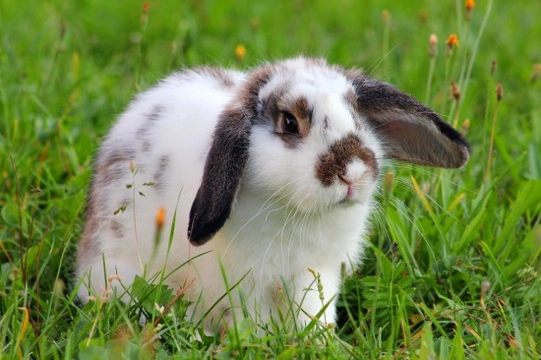
Share:
40 Interesting Rabbit Facts
Rabbits are both popular pets and very complex creatures that require specialist care and a knowledgeable owner. It is certainly fair to say that even for experienced keepers, there is always something new to learn!
If you think you’re a rabbit expert, test out your knowledge by seeing how many of the following forty interesting facts about rabbits you were not already aware of!
- A female rabbit is called a doe, which is where we got the phrase “doe eyed” from, referring to the large, soulful bunny eyes!
- A male rabbit is called a buck.
- Baby rabbits are called kits, but not kittens!
- Rabbits belong to a species grouping known as the lagomorphs, although they are often wrongly classified as rodents, particularly in the wild!
- The teeth of the rabbit never stop growing throughout their lives, but are worn down by the process of chewing their food. The phrase “long in the tooth” comes from rabbits, as elderly rabbits tend to have longer teeth as their metabolisms slow down.
- There are over fifty different species of rabbits recognised worldwide.
- Rabbits can be trained to go to the toilet in a litter box relatively easily, as rabbits are clean animals that naturally stick to the same areas each time to do their business.
- Domestic pet rabbits can live up to around ten years old, although seven or eight is more usual for a well cared for rabbit.
- The weight of adult rabbits can vary considerably depending on their breed, with tiny dwarfs weighing around 2lb, and some giant breeds tipping the scale at around 50lb!
- Baby rabbits begin the process of being weaned from their doe at the age of around eight weeks.
- Baby rabbits are born without any fur, and need to cuddle up together to keep warm!
- Like puppies and kittens, baby rabbits are born with their eyes closed, and the eyes do not begin to open until around the age of two weeks old.
- Rabbits can and sometimes do purr to indicate their satisfaction with things, much in the same way that cats do!
- Even very small rabbits can jump up to around three feet high when they are really trying!
- Rabbits are very susceptible to the effects of changes in temperature, and can easily become prone to heatstroke in hot weather.
- Rabbits’ eyes are on the sides of the head, giving them excellent vision all the way around, with a small blind spot at the point directly in front of them and directly behind them. As prey animals, this trait enables them to keep a lookout for predators.
- Excited rabbits will soon show their excitement by jumping and twisting around in mid air, and generally being full of the joys of spring!
- Juvenile rabbits can mate and begin to breed from the age of just three months, so spaying and neutering your pet rabbits is very important.
- When a doe is pregnant, she will use her teeth to pluck out some of her own fur to line the nest for her coming babies.
- Rabbits can also suffer from false or phantom pregnancies, causing them to display nesting behaviour even when they are not pregnant.
- Shock and sudden frights can literally scare a rabbit to death, as they have small, delicate hearts that beat at a very fast rate.
- Baby rabbits still with the doe are referred to as a litter, the same as kittens and puppies are.
- The time between conception and birth in the rabbit is just one month, one of the many reasons why rabbits are such prolific breeders!
- Rabbits are physically unable to vomit.
- Rabbits need to consume a large amount of hay or grass each day, in order to keep their digestive system moving and to bind hairballs in the stomach and allow them to pass.
- A group of rabbits together is collectively referred to as a herd.
- In the wild, the underground burrows that provide rabbits with their homes are known as a warren.
- When a doe has a litter, she leaves them alone for the greater part of the day from the time that they are newborn, in order to forage for food and to eat. Typically, she will return to her litter just once a day for a few minutes in order to feed them.
- Rabbits require a considerable water intake each day, and a rabbit that weighs 2lb will drink as much water in a day as a dog that weighs 10lb!
- Rabbits love to chew, and need a constant supply of safe, chewable toys to be happy and to keep their teeth in good condition.
- Rabbits do not hibernate or alter their behaviour considerably during the colder months of the year.
- Rabbits do not sweat in the same way that people do, but instead have sweat glands in the pads of the feet, which allows them to cool down and maintain their temperature.
- Rabbits are very fastidious about their grooming habits, and spend considerable amounts of time grooming themselves.
- Rabbits have 28 teeth in total, all of which grow constantly.
- Released domestic rabbits are highly unlikely to thrive or survive in the wild.
- Rabbits eat their own droppings to provide additional nutrients to their diet, and assist with digestion.
- An annoyed rabbit will growl to let you know that they are displeased!
- Rabbits can be very territorial animals, and will often defend their home against even their owners if incorrectly socialised!
- The largest rabbit in the world is a Continental Giant named Ralph, who weighs in at 55lb!
- The oldest recorded rabbit on record reached sixteen years of age, and died in 2012.



